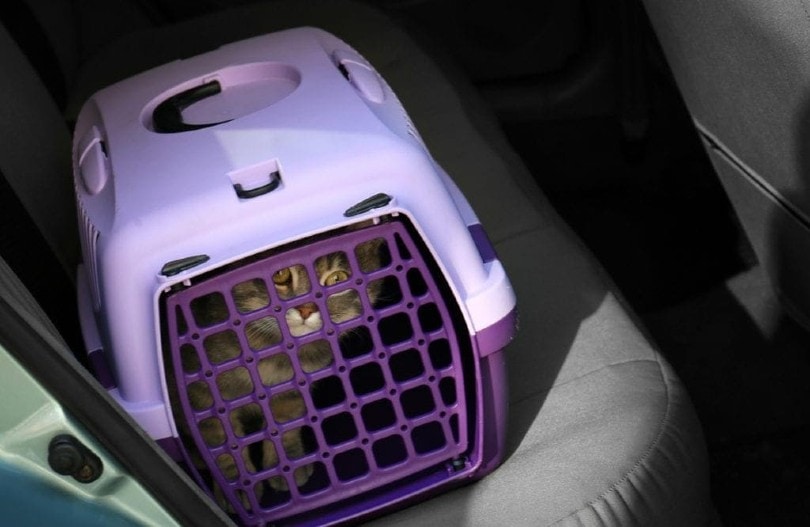VET APPROVED

The information is current and up-to-date in accordance with the latest veterinarian research.
Learn more »Click to Skip Ahead
If you’ve ever tried to take your cat on a car ride before, you know just how anxious some cats get when in the car. Because cats are such creatures of habit, they do not like being taken from their home and placed in an unfamiliar situation.
Unfortunately, it can be impossible to avoid taking your cat on a car ride, such as for veterinary appointments. Therefore, it’s important to know how to calm down a cat in the car.
In this article, we’ll discuss eight methods for how to calm down a cat in the car. With these techniques, you can help your cat calm down so that you can safely transport them from one location to the next.

The 8 Ways to Calm Down a Cat in the Car
1. Introduce Your Cat to the Carrier Before the Trip
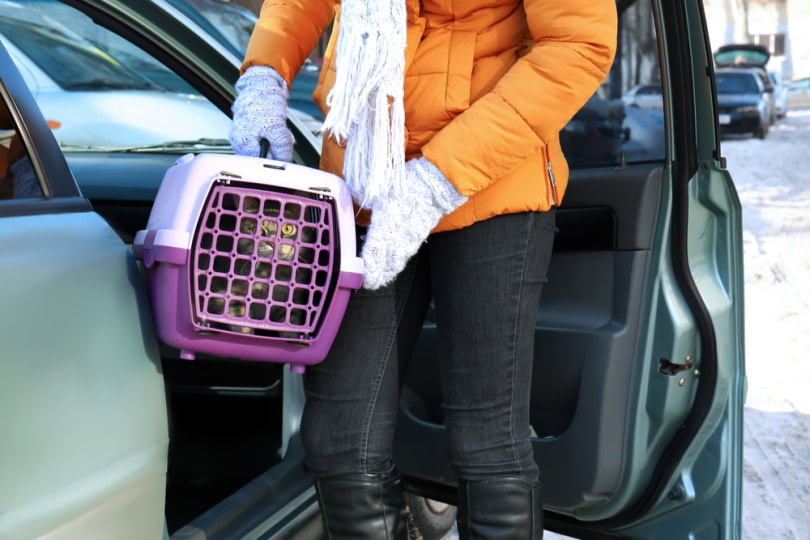
Most cats do not like the car because they are thrust into an unfamiliar cat carrier and vehicle, but you can introduce your cat to the carrier days before the trip. By allowing your cat to smell the carrier, they won’t be as afraid of it.
Before placing the cat carrier in your vehicle, allow your cat to investigate it in your home. Once your cat is comfortable approaching the carrier, you can try putting some treats inside to get them to go in on their own. Leave the carrier door open so they can go in and out as they please.
The food will help your cat develop a positive association with the carrier. Do not force your cat inside; instead, use toys and food to entice them to go in. Repeat this multiple times until they go in voluntarily and even lie down to rest.
2. Take Short Trips to Acclimate Your Cat to the Car
After your cat is comfortable inside the carrier, put them inside the carrier and carry it to your vehicle. Just as you want your cat to be familiar with the carrier, allow them to become familiar with the vehicle as well.
You can begin the acclimation process by taking short trips. Gradually, over the course of a few days, increase the length of the trips.
3. Tire Your Cat Out Before Leaving
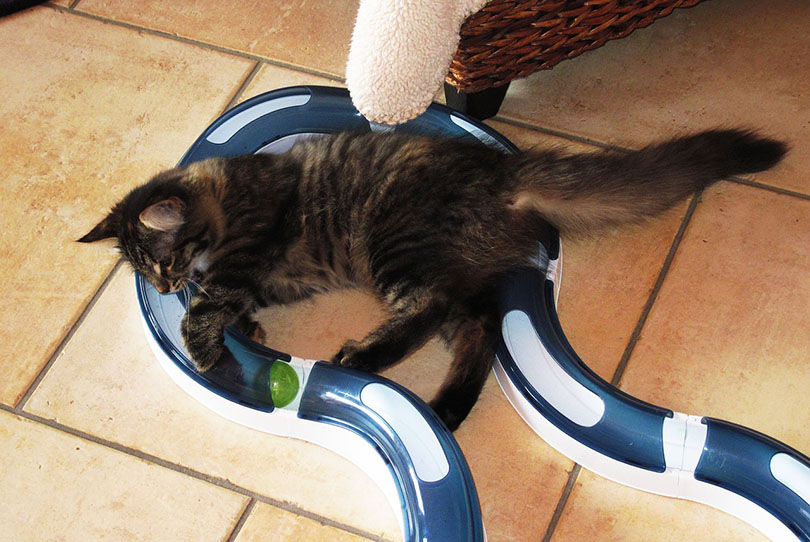
On the day of the trip, tire your cat out before leaving by having playtime. By tiring your cat out before the trip, they are more likely to be calmer.
4. Stay Calm
Felines are highly intuitive. If you are stressed out, your cat will be stressed, too. Try to stay calm and collected on the day of the trip. No matter how the cat is behaving, put on a brave face or else you could make the situation even worse.
If you are concerned about your cat and their anxiety, we suggest speaking to one of our vets!
5. Provide Familiar Smells in the Carrier
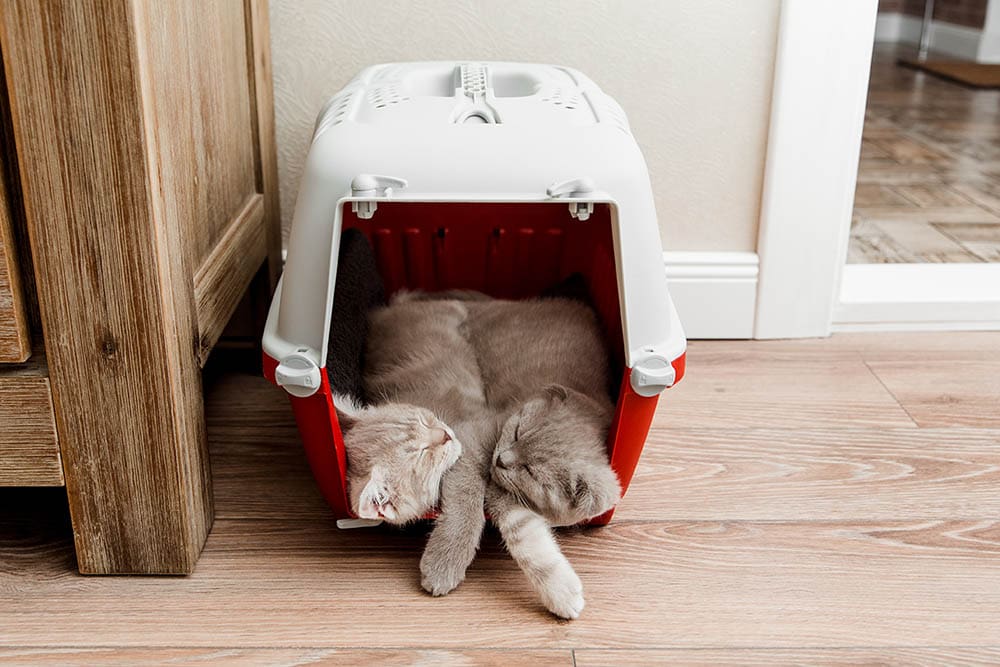
Make sure to add familiar smells inside the carrier for the trip, depending on the length of the trip and the size of the carrier. Provide your cat with the basics, such as their favorite bed, toy, and treats. With familiar smells, your cat is less likely to be stressed out. You can also add a shirt with your scent to relax them. For longer trips, they need a large crate so they can have a litter box inside, as well as a hideout area for resting, food ,and water bowls.
6. Try Calming Pheromones
Some cats respond positively to calming pheromones. You can purchase a calming pheromone and spray it in your car and carrier about 15 minutes before leaving. This tip won’t work for all cats, but it can make a big difference to those that respond positively to the pheromones.
7. Place the Carrier Near You in the Car If Possible
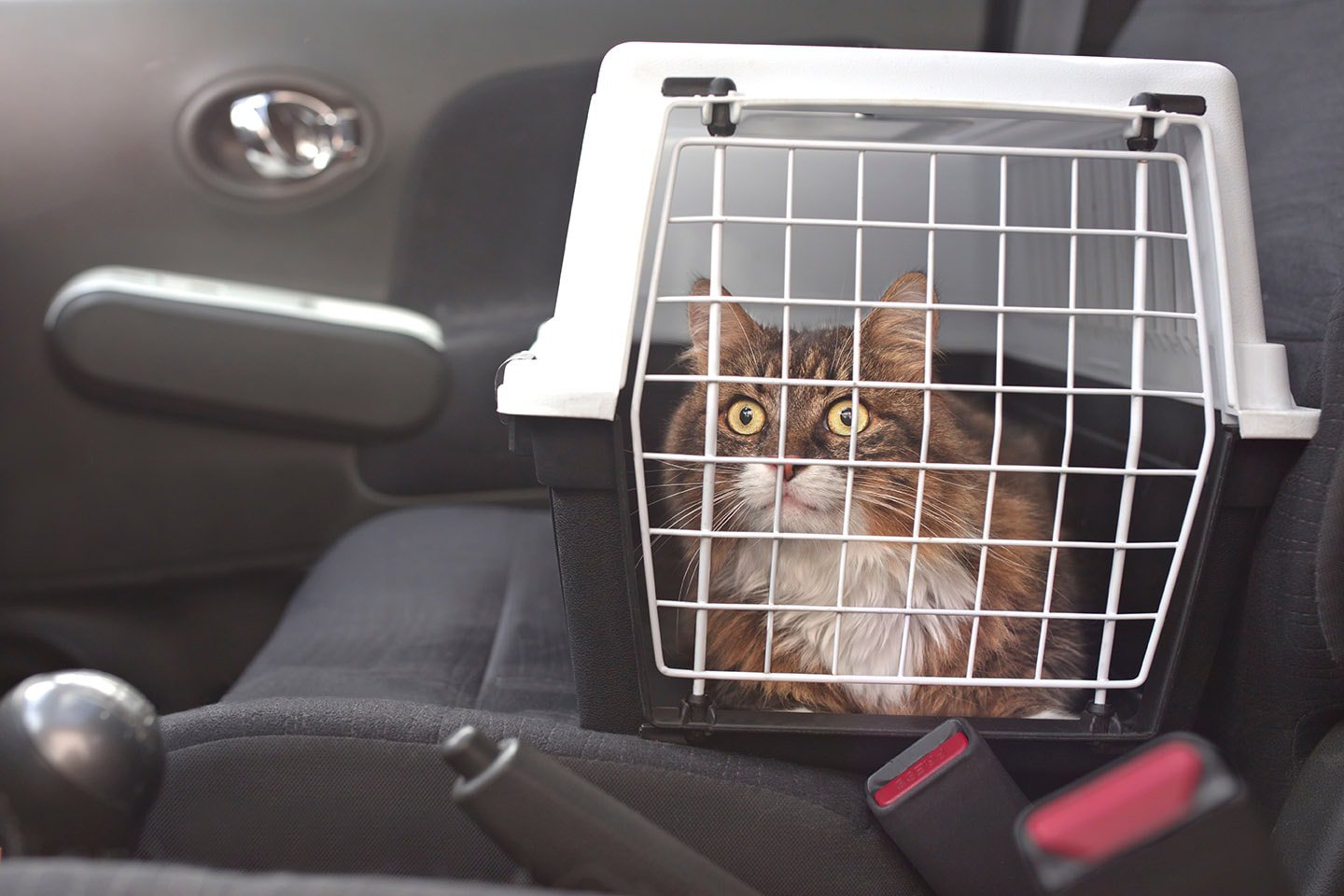
Try to place the cat carrier as close to you as possible. The cat will likely look to you for comfort. The closer they are to you, the better. However, ensure the carrier is attached to the seat with a seat belt or tether to keep them safe.
8. Talk to Your Vet About Calming Medications
If you know that your cat has severe anxiety when in the car, you can also talk to your vet about prescribing calming medication. They may be considered for long trips, if your cat will be in the car for a long time, such as when driving across the country.
What Should I Bring for My Cat During Long Road Trips?

When taking your cat for long road trips, it’s essential to pack everything your cat may need during the journey. Pack food, water, and medication. Also, pack your cat’s favorite treats, toys, litter, and other items your cat is familiar with. Ensure the crate is large enough for your cat to move around comfortably, as well as to fit everything they may need.
In addition to your cat’s day-to-day items, don’t forget your cat’s medical documents, recent lab work, vaccination certificates, and vaccination tags. Also, ensure your cat is wearing identification and a properly fitting harness.

Should I Leave My Cat at Home With a Sitter?
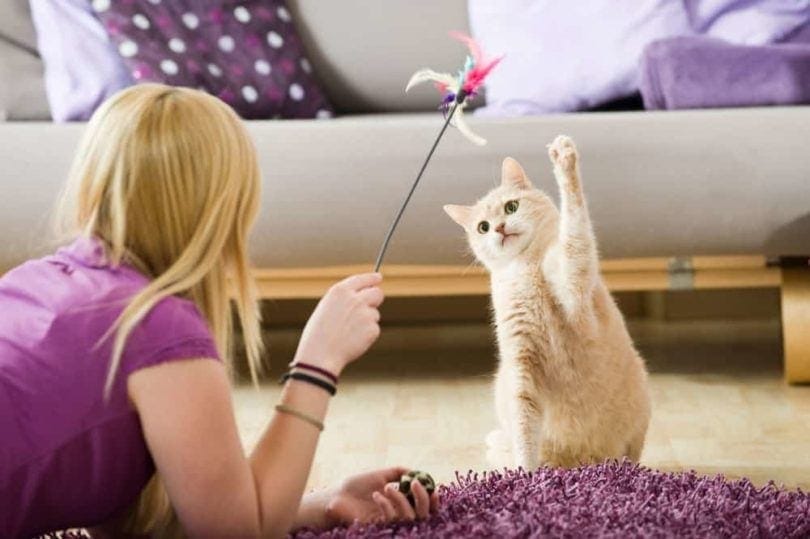
Unless you can’t avoid taking your cat with you on the journey, it may be best to simply leave your cat at home with a cat sitter. Even though you may get lonely without your cat, leaving them at home is the best choice for your furry feline.
For example, you should leave your cat at home with a sitter if you leave for a week or so. Even if the sitter is someone your cat has never met, your cat will be much less stressed with a new cat sitter than they would be on a car ride, in most instances. However, there are cats that are used to car drives and road trips, and they may prefer to be alongside their owner instead, but those are less common examples.
The only time you should take your cat away from home is when it is unavoidable. Vet appointments and moving to a new home are two examples.
If you have someone you can trust that your cat is already familiar with, that’s the best choice for a cat sitter. If you do not know anyone who can or is willing to watch your cat, you can look online for reputable cat sitters in your area.
Final Thoughts
If you need to take your cat for a car ride, you must prepare quite a bit since most cats hate car rides and get stressed. By using the 8 proven methods above, you can minimize your cat’s stress to the best of your ability.
Remember that even if you implement the tips, your cat will likely still be stressed. Therefore, it’s best to allow them to ride along only when it’s essential.
Related Reads:
- Reasons That Cats Hate Car Rides (and How to Make Them Like It More)
- Best Dog Toys for Separation Anxiety – Reviews & Top Picks
Featured Image Credit: Africa Studio, Shutterstock
